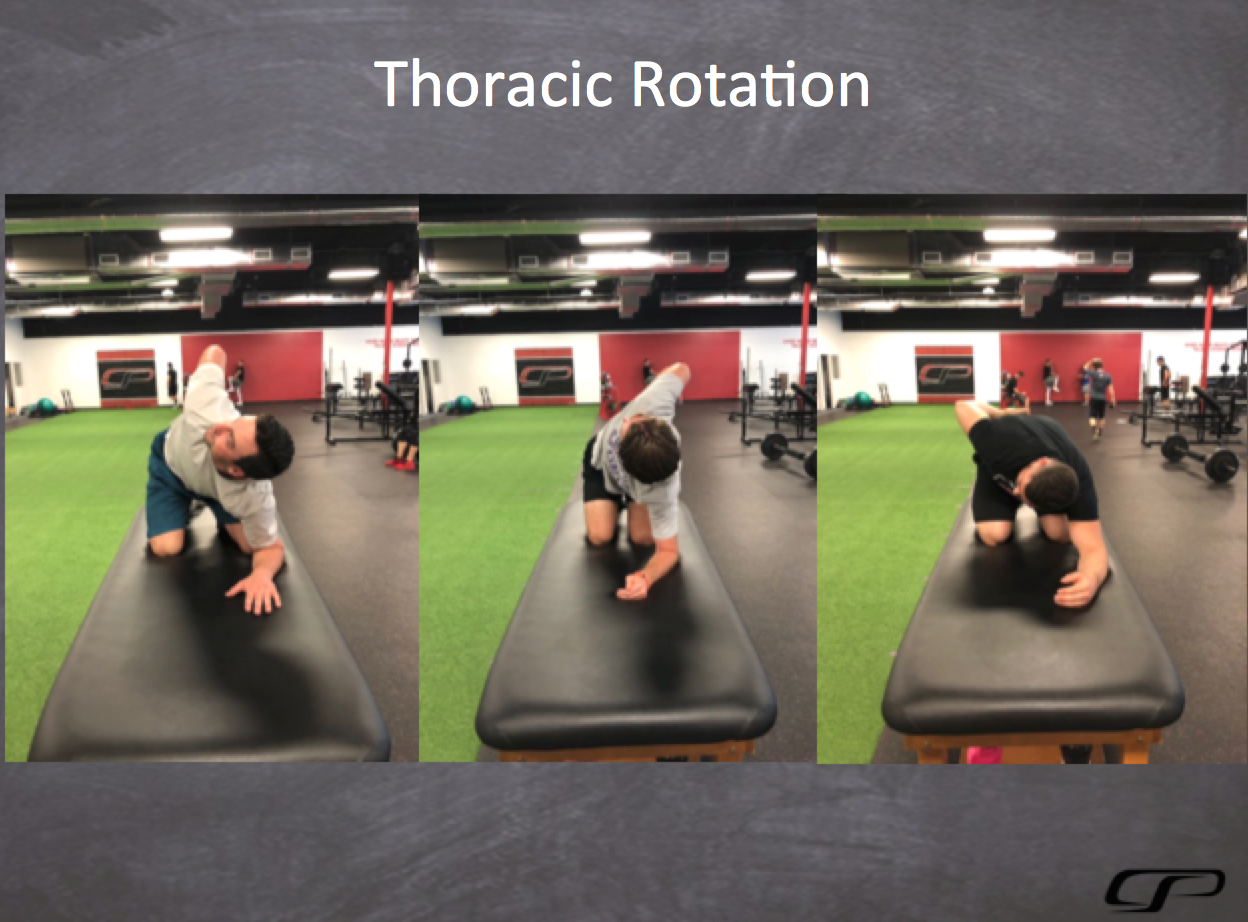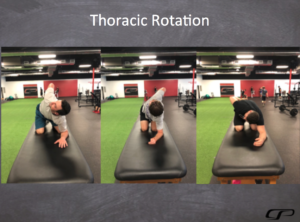
Exercise of the Week: Bent-over T-Spine Rotation with Hip Hinge
I wanted to introduce you to a new exercise we’ve been playing around with lately. I created the bent-over thoracic spine rotation with hip hinge because I was looking for a way for athletes to avoid compensatory movements as we worked on thoracic spine mobility in the standing position. Essentially, you’ll often see folks with limited thoracic spine mobility move East-West with the hips or laterally flex through the spine as they try to find motion in spite of their limitations. By pushing the butt back to the wall, we effectively block off compensatory hip motion (and work on a better hip hinge pattern at the same time).
Key coaching points:
1. By having the eyes follow the hand, you get some cervical rotation to help things along.
2. Make sure the upper back is moving and you aren’t just “hanging out” on the front of the shoulder. This is especially true in a throwing population who may have acquired anterior shoulder laxity.
3. We’ll usually do eight reps per side. This can be included as a single set during a warm-up, or for multiple sets as fillers during a training session (we’ll often plug it in between medicine ball sets).
4. This is a better option for those who have active range-of-motion limitations to thoracic spine rotation, as opposed to passive limitations. In the case of the passive limitations, athletes are better off with things like side-lying windmills, where they have assistance from gravity (instead of having to compete against it).
To learn more about how we assess, program, and coach around the thoracic spine (and entire shoulder girdle), be sure to check out Sturdy Shoulder Solutions.



